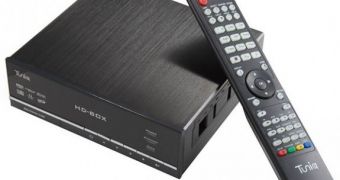Internet has begun to be integrated into many types of electronics, and set-top boxes have definitely evolved into hybrids by adopting such connectivity, to the point where analysts are actually predicting that these devices, as they bring a new set of services to TVs, will grow in popularity very quickly.
The Internet is becoming accessible on smartphones, Blu-ray players, game consoles and TVs themselves, and set-top boxes are, naturally, going with the flow.
There are already numerous streaming services, such as YouTube, that consumers want to access directly.
Thus, Hybrid Web-to-TV set-top boxes are expected to reach revenues of 1.3 billion worldwide by the end of 2014.
According to In-Stat, there are multiple such products currently on sale, but only a fraction of them actually make the best of this connectivity.
Western Europe is seen as the “hot bed” for development of hybrid services, whereas Intel's x86 technology will be a key enabler as it supports Adobe FLASH, Windows Media, Microsoft Silverlight, DiVX, and VP8.
“TV programs have come to the Internet. Now, the Internet is coming back to TV, and savvy software engineers and smart TV producers are finding ways to create new "hybrid" services that bring it all together,” said Gerry Kaufhold, the principal analyst for In-Stat.
The set top box industry is scrambling to create designs that facilitate all these new features," he added.
Western Europe will also be the leader for early Hybrid STB shipments, but the other parts of the world will develop as well, on their own trajectories.
Currently, companies are working on “'hybrid' services that bring "apps" and "widgets" to TV programming, along with advanced advertising.”
Finally, among the companies involved in this market are Google, Apple, Microsoft, DiVX, Intel, Adobe, Philips, LG Electronics, Time-Warner, Cisco Systems and many others.

 14 DAY TRIAL //
14 DAY TRIAL //